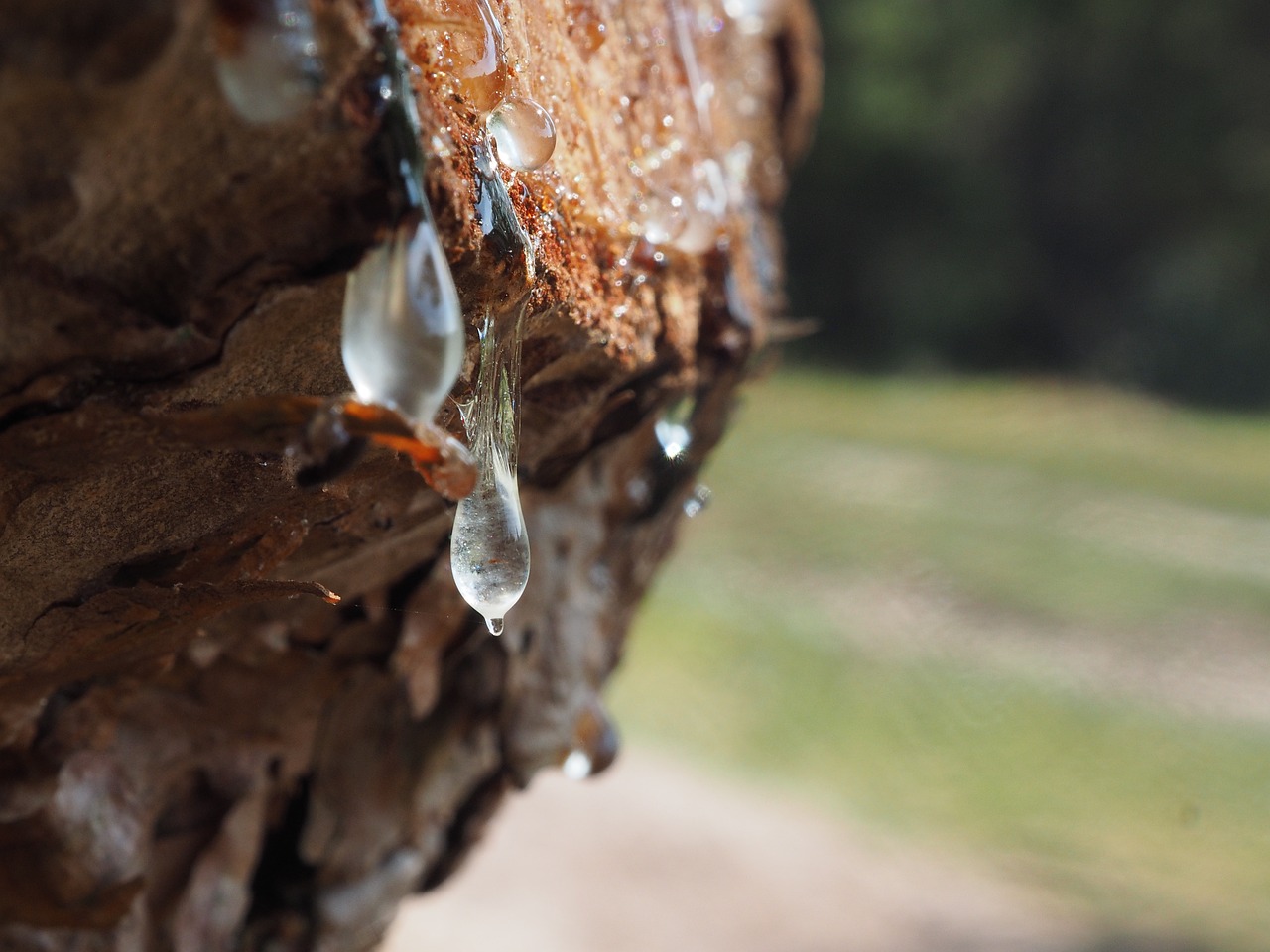
How Do You Remove Tree Sap From a Car?
To remove tree sap from your car, you can use several effective methods. Rubbing alcohol works well, simply apply it to the sap with a cotton ball, let it sit for a few minutes, and then rub it off. Isopropyl alcohol is another option—dampen a cloth with it and gently wipe the sap away without damaging your car’s finish. Acetone nail polish remover can also break down sticky sap effectively. You can soften the sap by placing a warm, damp microfiber towel over it and then wiping it clean. A clay bar and clay lubricant are gentle tools for removing sap, while tar remover can dissolve sap if you let it soak in before wiping. Baking soda is another safe option; dip a damp cloth in it and rub it in circles to remove the sap without harming the paint. After cleaning, wash your car and apply wax or polish to protect the finish and restore the shine.
What Is Tree Sap?
Tree sap is a sticky, translucent liquid that is important for a tree’s health. It is made up of water, minerals, nutrients, sugars, and plant growth hormones. The sap moves through the tree, carrying water, nutrients, and sugars to help it grow and generate energy. Sap travels through the tree’s xylem and phloem vessels: xylem carries water and nutrients from the roots, while the phloem carries sugars and hormones from the leaves. Sap can be collected using buckets and spiles, such as for making maple syrup from maple trees. Abnormal sap oozing or blistering can signal issues like disease, pests, fungus, bacteria, or root rot. While most tree sap is not flammable, some types that contain aromatic oils can catch fire.
What Does Tree Sap Do To A Car?
Tree sap is a sticky substance that can seriously damage your car’s paint if not cleaned off quickly. The acids and other compounds in the sap can slowly etch into the paint, causing permanent damage. The longer the sap stays on the surface, the more damage it can cause to the paint. That’s why it’s extra important to know how to remove tree sap from a car as quickly as possible.
Is Removing Tree Sap From A Car Difficult?
Removing tree sap from your car can be challenging, especially if it has dried, but with the right approach, you can do it without damaging the paint. Acting quickly is important because the longer sap stays on your car, the harder it is to remove, and it can even cause permanent damage. Using the right products, like acetone, a mix of 70% isopropyl alcohol and 30% water, or a gloss cleaner with a scraper, can make the job easier. Be extra cautious with sap from cedar, fir, or pine trees, as their thick, sticky sap can pull off paint if not handled correctly. If you’re unsure or lack the tools to do it yourself, consider taking your car to a professional auto paint shop for help.
Where Is Tree Sap Most Common?
Tree sap is most common in trees that are damaged or infested with insects. Maple trees, for example, are known for their sap, and regions like Vermont and New York in the United States, and Quebec in Canada (producing 91.6% of the country’s maple syrup), are major producers of maple syrup. Pine trees release sap when they are damaged as a way to protect themselves from further harm. Trees with insect infestations, like ash, oak, elm, maple, rose, willow, and fruit trees, often produce honeydew, a sticky substance caused by insects, or extra sap to defend against pests. Sap production is highest in the spring and early summer, slows in the winter, and increases again as spring approaches. To check if a tree is ready to be tapped, make a small cut in the bark—if sap appears within 30 seconds, the tree is ready.

Can Tree Sap Damage A Car?
Yes, tree sap can damage a car if it’s not removed. It can eat through the clear coat, leading to discoloration of the paint. As the sap shrinks over time, it creates tension that can crack the car’s finish. Sap on the windshield or windows can obstruct your view, making driving unsafe.
Can Tree Sap Be Poisonous To The Touch?
Yes, sap from certain trees can be poisonous to the touch and cause serious reactions. The manchineel tree’s sap contains toxins that can lead to skin irritation with burning, itching, swelling, and blisters. Its smoke can even cause blindness, and its sap contains phorbol, a compound that triggers allergic contact dermatitis. Giant hogweed, a wildflower, produces chemicals that cause severe blistering when exposed to sunlight. The pain bush can cause a swollen rash with blisters, while poison oak contains urushiol, a chemical that leads to a bumpy rash with blisters. Sap from euphorbia plants can burn the eyes. If exposed to manchineel sap, wash your skin or eyes thoroughly, use cold compresses, and apply calamine lotion or hydrocortisone cream for irritation. Severe symptoms may require antihistamines like Benadryl. When handling euphorbia plants, wear gloves and protective eyewear to avoid contact. By knowing how to remove tree sap from a car and knowing which tree saps are poisonous, you could avoid a potential reaction to a poisonous tree sap.
Will Vinegar Remove Tree Sap From A Car?
Yes, vinegar can remove tree sap from a car, but it’s not recommended because it can damage the paint. The acidity in vinegar can strip away paint sealants, leaving your car’s surface unprotected. Instead, it’s better to use car shampoo or a specialized tree sap remover for the paint and a car glass cleaner for windows. Automatic car washes aren’t very effective for removing sap either, as they can spread the sap around without fully removing it.
Can Hand Sanitizer Be Used Instead Of Vinegar To Remove Tree Sap Off Of A Car?
Yes, hand sanitizer can be used to remove tree sap from a car because the alcohol in most hand sanitizers effectively dissolves the sap. This makes it a good substitute for vinegar. To use it, apply a small amount of hand sanitizer to a cloth or cotton ball and gently rub it on the sap. It’s important to test the hand sanitizer on a small, hidden area of your car first to make sure it won’t damage the paint. The alcohol in hand sanitizer, usually isopropyl alcohol, acts as a solvent to break down the sap without harming your car’s surface if used properly.
Will Dawn Dish Soap Remove Tree Sap From A Car?
Dawn liquid dish soap is another effective way to remove tree sap from your car, especially if the sap is fresh. If the sap has hardened, it’s better to use WD-40. To remove sap with Dawn soap, start by thoroughly washing and drying your car before applying the soap to the affected areas. This method works best when the sap is still soft and hasn’t set into the paint.

What Is The Best Cleaner For Getting Tree Sap Off Of A Car?
Products like Goo Gone Automotive Formula or Turtle Wax Bug and Tar Remover are highly recommended for removing tree sap from your car. These products are specially designed to dissolve sap without damaging your car’s exterior. Be sure to follow the instructions on the container for the best results.
How Long Does It Take For Tree Sap To Damage Car Paint?
It’s hard to say exactly how quickly tree sap can damage your car’s paint because it depends on factors like the weather, season, and climate. When it’s hot and sunny, the sap can harden and “bake” onto your car’s surface, speeding up the damage to the clear coat and paint. By knowing how to remove tree sap from a car, you can help prevent excessive damage as tree sap that is left on a car for too long can potentially cause permanent damage.
What Time Of Year Does Sap Come Off Trees?
Most tree sap is produced during the spring and early summer.
How Do You Protect A Car From Tree Sap?
After washing your car, applying a high-quality wax or paint sealant can add an extra layer of protection against tree sap. This protective layer helps prevent sap from sticking to the paint and makes it easier to remove if it does.
Can Tree Sap Get Inside A Car?
Yes, tree sap can get inside a car and damage the paint and windows. This usually happens when sap drips from tree branches, especially in the spring when trees are producing sap. The sticky substance can land on the car’s surface and cause damage if not cleaned off quickly. Knowing how to remove tree sap from a car is beneficial in many ways. A good reason to know how to remove tree sap from a car is because tree sap can get inside your car if left for too long. Certain tree saps can be poisonous to the touch. If you were to leave tree sap sitting and it got in your car, you could accidentally touch it without knowing and have a reaction to it.
Can Tree Sap Get Into A Car’s Engine?
No, tree sap cannot get into a car’s engine.
Can Tree Sap Rust A Car?
Yes, tree sap can cause rust on a car. The acidic components in the sap can bond to the car’s clear coat and, over time, reach the metal beneath, leading to rust. As the sap dries, it shrinks, creating tension that can crack the clear coat or paint. This can result in corrosion, which dulls the car’s finish and causes rust spots. Tree sap can also leave stubborn stains that are hard to remove. Sap on the windshield can reduce visibility and increase the risk of accidents. Knowing how to remove tree sap from a car can be useful in many ways other than avoiding damage to your car. Knowing how to remove tree sap from a car can help prevent you from the risk of an accident in the case that tree sap got on your windshield.
What’s The Worst Damage Tree Sap Can Do To A Car?
The worst damage tree sap can cause to a car is permanently etching into the paint, which can lead to discoloration, fading, or even peeling if left on for too long. This is especially true when the sap is exposed to sunlight, which can “bake” it onto the car’s surface, making it difficult to remove without damaging the paint. The sap’s chemical composition can eat through the clear coat, and if not dealt with, it may lead to rust. The longer sap sits on the car, the more damage it can cause, and sunlight can speed up this process. As the sap dries, it shrinks, creating tension that can crack the clear coat. If the sap is stubborn or covers a large area, professional cleaning may be needed to remove it safely without damaging the paint. Certain damage from tree sap can be permanent, that’s why knowing how to remove tree sap from a car quickly and efficiently is imperative.
Should You Hire Someone To Remove Tree Sap Off Of A Car?
If the tree sap on your car is stubborn, dried-on, or covers a large area, you might want to hire a professional to remove it. Removing sap can be time-consuming and difficult, especially if you’re concerned about damaging the paint. A professional detailer will have the right tools and products to safely clean the sap without harming your car’s finish. Hiring a pro is a good idea if there’s a large amount of sap, especially in hard-to-reach areas, or if the sap is dried and hardened, as they’ll know the best techniques for removal. If you’re worried about scratching your paint, a professional can ensure a safer approach. Many detailers can also apply additional paint protection after cleaning. If the sap is fresh and only in a small area, you can usually remove it yourself with basic cleaning supplies like car wash soap, bug and tar remover, rubbing alcohol, or a dedicated sap remover. If you feel like hiring a professional is not necessary, then that is why it’s extra important that you know how to safely but effectively remove tree sap off of a car.
Is It Expensive To Remove Tree Sap From A Car?
Removing tree sap from a car is usually not expensive, especially if you do it yourself using products like rubbing alcohol or bug and tar remover, which can typically be found for under $10 at most auto parts stores. These DIY solutions are simple and inexpensive. If the sap is particularly stubborn or you prefer to have it professionally removed, the cost may be slightly higher, as a professional detailer will charge more for their services. Most of the time, using affordable commercial products is all you need to get the job done. Whether you’re on a budget or prefer to do the job yourself, knowing how to remove tree sap from a car is important especially if you park your car by trees often.
How To Prevent Tree Sap From Getting On A Car
To prevent tree sap from getting on your car, try to park away from trees whenever possible. If you park under trees often, consider using a car cover for extra protection. Applying a layer of car wax or a ceramic coating can also help by creating a protective barrier that makes it easier to remove sap if it does land on your car. Regularly washing your car is important too, as it can help remove sap before it hardens. A combination of these methods will help keep your car safe from tree sap damage. Knowing how to properly remove tree sap from a car as well as knowing how to prevent it will save you from future hassle.

